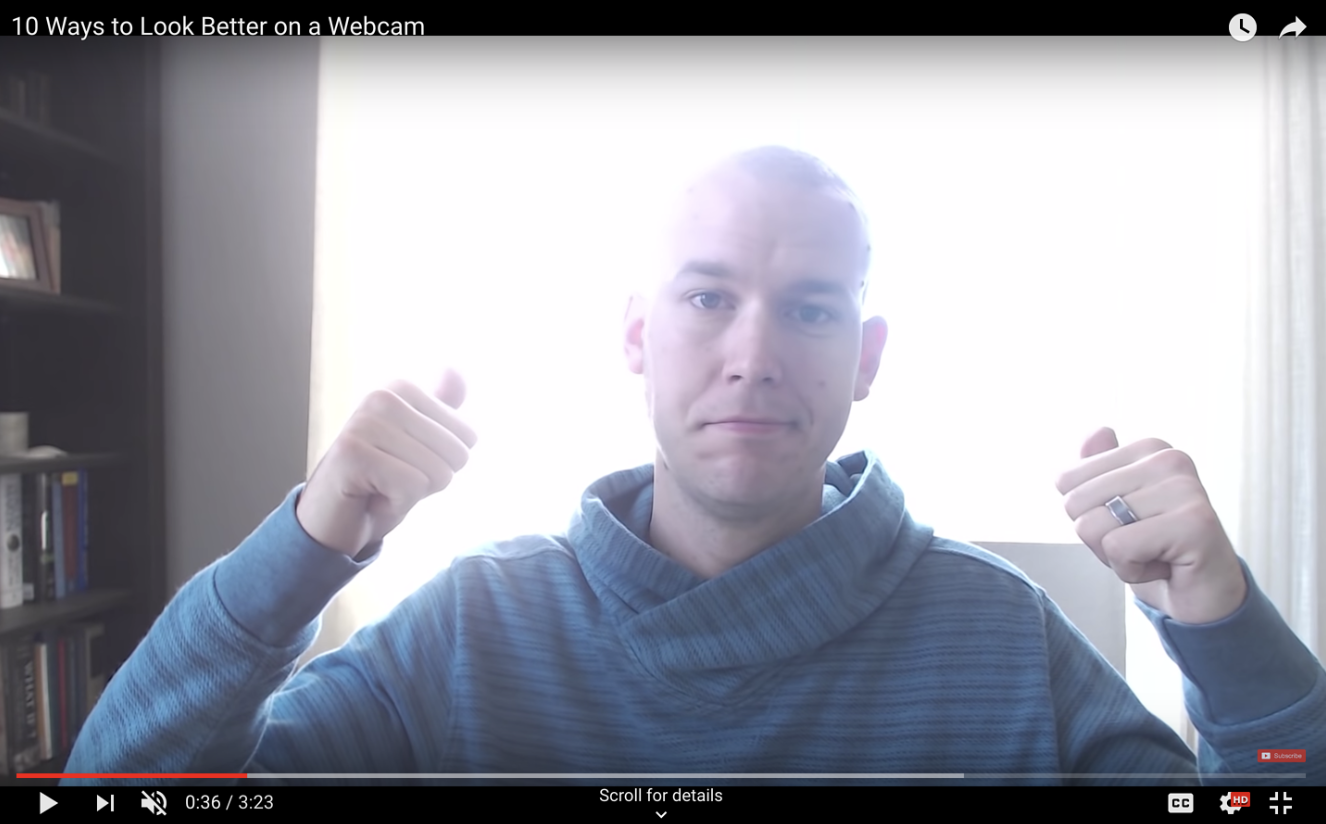
How to Interview and Hire Developers Remotely
HR Tips Hayley Kuhl
This is part two of Honeypot’s Remote Hiring Guide. Here’s part one: How to Source and Screen Developers Remotely and part three: How to Onboard Developers Remotely
You had your interview process down. Your candidate experience was stellar. Glassdoor was packed with positive reviews, your inbox overflowed with candidate emails thanking you for the smooth experience. But then COVID-19 hit, and your company, like many others, adopted an indefinite work-from-home policy. No more face-to-face interviews, no more onsite days, no more get-to-know-the-team-lunches.
In this new remote world, how can you maintain your recruiting standards while still providing a positive and friendly candidate experience for developers in your pipeline?
The good news is many Honeypot clients are already happily doing full interview and selection processes with developers remotely. We gathered these 11 simple tips.
Preparing for the interview:
1. Check your tech
There are few things worse than having your tech fail you during an interview. To avoid it, here are a few things to do in preparation for your upcoming remote interview:
- Download the latest version: If you’re using Zoom, Lifesize, or a similar program, make sure your candidate knows beforehand to download the app (it is often more reliable than the browser version).
- Send contact details in advance: Whether it’s a Skype username, a Hangout link or a Zoom conference room, make it clear in advance how the candidate should reach you.
- Check your camera, audio and microphone: you can usually test in the application, but if you want to be extra careful, test with a colleague.
- Battery Power: Make sure you have sufficient battery!
- Ask for a phone number: before the interview, ask for the phone number of the candidate. If your tech really does fail, this is important to have!
Heck, if you want to be trip safe, just go ahead and restart your whole computer. All programs will reopen fresh, limiting chances of a crash during the call. Although a crash is unlikely anyway… you just never know.
2. Mute your notifications
Snooze your Slack notifications and pause your email alerts as they’re distracting for both you and the candidate. How many times have you been in a situation where that ** IMPORTANT ** email alert comes through in the top right of your screen, and your sentence trails off or you stop listening to the other person for just a moment, only to come back a second later and mumble an apology? Just me? Anyway, I can’t stress this one enough. Snooze everything.
3. Create a clutter, noise and distraction-free environment
Since you’ll likely be conducting the interview from home too, then this point is especially important.
Basically, don’t be this guy.

4. Set-up your video frame
One common mistake that a lot of people make is putting light directly behind them during video calls, like sitting with their back towards a window. This blows out the background and turns you into a silhouette. No one can see you! So make sure you light from in front, not from behind. Do this with the natural light through a window or a lamp.

Also be sure to position yourself correctly too - your head and shoulders should be showing; you don’t want any full-face, seeing-up-your-nose action.

Source: Wired
5. Prepare your script
You’ve done about a million interviews before, so you probably have the process down, but one benefit of conducting remote interviews is that you can have your questions right there on the computer screen and read them as you go.
If you haven’t done that before, the process is pretty simple. Give this a try:
- Press the Windows key and left or right arrow, followed by the up or down arrow.
- Then do the same with a second window on the same side and you will have two snapped into place.
And for Mac:
- Click and hold the full-screen button in the upper-left corner of a window.
- Hold down on the button until it shrinks and drag over to the left or the right of your screen.
- Release the button, then click a window on the other side of the screen to begin using both windows side by side.
Your screen should be split now, and you can see the candidate and your questions at the same time.
Conducting the interview
Most things will look quite similar to a face-to-face interview. You’ll ask the same questions, and you’ll want the same outcomes, but the medium is different and there are a couple of things that are essential to keep in mind while conducting a video interview.
1. Build trust with your candidate
This is something that is much easier to do face-to-face, but building trust and rapport with the interviewee is not impossible via video! It does, however, take a little more work.
Start as you usually would by making sure the candidate is comfortable. Do they have water or a coffee? Then try a little bit of a conversation. Ask the candidate how they’re doing, be willing to be a little vulnerable about how you’re doing yourself. It’s your job to make them feel at ease!
Finally, don’t forget to introduce yourself. Tell them who you are, where in the company you work and set expectations: what are you hoping to get out of this call? It’s a very simple step but one that can be overlooked when your mind is going in a million different directions. It also helps to ease the candidate into the call - they’re probably feeling a little nervous, too.
2. Make your expressions clear
The candidate can’t read your body language - this is why it’s especially important to let the candidate know how you’re feeling through facial expressions. Smile and nod, give a thumbs up here and there, and make these expressions a little bit bigger than you usually would if face-to-face. You don’t want the candidate to think your video has frozen, which can tend to happen when you’re listening intently. Be sure to listen actively, too.
3. Give space and time for video lag
This one is a common problem. How often have you been in a video conference call where you’ve been cut off by the other person, barely having finished your thought? What we often forget is that conversation can’t flow in the same way with video conferencing software; there can’t be the jousting of thoughts and words, interjecting isn’t so easy anymore, and it all feels quite unnatural. Keeping this in mind, ensure that you wait a moment when you think the candidate has finished speaking. This allows for the lag to catch up, and you can be assured that you won’t be cutting them off. Hopefully they’ve had the foresight to think about the same thing with you - you’ll know if they’re interrupting you or if it’s an honest mistake.
4. Dealing with a poor connection
Maybe this is on their side, or maybe it’s on yours. Be prepared for the possibility either way. This is another opportunity to show some agility and there are potential solutions. Perhaps the video is lagging too much where you are unable to see the candidate, or their audio is often cutting out. Offer to switch the interview to audio only and shut off the cameras. This can help a great deal.
It’s useful to ask the candidate for their email prior to the interview starting. If the connection cuts or is too poor to communicate, give them a ring. If you don’t have a company phone already, ask for one - or if not, some support with paying your data plan!
If it’s really unmanageable, offer to reschedule. Try to do so directly on the call or via a chat to make sure the candidate still has a clear and quick experience!
5. Give the candidate breaks during back-to-back interviews
Just as you would for on-site interviews, if you’ve allotted a couple of hours for a candidate to be interviewing in your office, you’ve probably allocated some time for them to have a drink or bathroom break. Allow them the same opportunity during back-to-back video interviews. It’s equally important for the candidate to recharge their mind and come to each interview refreshed and ready to continue. It’s also easy to forget in the virtual world.
6. Prepare when interviewing with colleagues
Trying to navigate a remote interview alone is one thing, but what do you do when there are other colleagues in the call? There are few worse things in an interview than the interviewee being unprepared. There are things you can do to ensure that you don’t give this impression:
-
Coordinate with your hiring manager: The person scheduling and coordinating the interviews should send an overview to all interviewers about the plan for the candidate. That gives you a chance to know in which sequence you are interviewing.
-
Sync with your interview partner: have a quick call or chat with your interviewing partner before the call. Sounds simple, but you’d be surprised by how often people just roll into interviews to ‘wing’ it. We’re all busy! It happens! Before the interview talk about what you both want to get out of the interview and who takes which topics.
-
Decide who is closing: Decide who should close the call - make sure to give an opportunity for a final question before saying goodbye to the candidate.
7. Ask the right questions
Although they might not be a remote employee forever, they might be for the first little while, and so there are some extra qualities you should be looking for. You might want to know just how independent they are, what their communication is like, what motivates them, and so on. Some examples of questions you can ask to get this information include:
- What motivates you?
- What tools have you used in the past for communication?
- What do you think your biggest challenge will be while working remotely, and how do you expect to overcome it?
- How do you process information?
- If you had a problem, but no one else on the team was online or available, how would you handle it?
8. Let them know next steps
This step is another one you would do on-site, but is easily forgotten when interviewing online. Let the candidate know the next steps: who will be in touch, and when? Thank them for taking the time and let them ask any questions they might have!
After the interview
Write down your notes right away
This is a huge benefit of video interviews. During on-site interviews, you would usually have to say goodbye to the candidate and walk them out - maybe even show them through your office. Important details from the interview can slip your mind, but with video interviews, you can hang up the call and input your feedback right away. That’s ‘interview best practices’ 101!
What about technical interviews?
The technical interview for developers takes quite a different approach. Your average interview is very straightforward - have a chat, make some notes, make your decision - you’re done! Though when hiring developers, the process can often be lengthier and more… robust, let’s say. But it’s not too tricky to also conduct these remotely - their whole job is computer-based anyway.
Consider limiting your technical interviews to the asynchronous kind.
-
Take-home code challenge: They submit the code within a given timeframe with documentation to show their thought processes. Discuss it further in a call afterwards.
-
Pair programming: this is another take-home challenge, except that they do it with another colleague - also in a given timeframe. This way the candidate can ask questions, both they and the current employee can assess how they would work together, and it can easily be done via a screen. Use some coding interview programs such as Codepen or Codeshare. We use Hackerrank’s Codepair at Honeypot.
Takeaways
Many Honeypot clients already conduct large chunks of the interview process remotely. In fact, many companies, particularly those hiring international talent, do everything online. Applying common sense in preparing your work-area, looking after the applicant and communicating with your colleagues, are often the small details which make the difference for the candidate.
Remote interviewing doesn’t have to feel like a burden or a stop-gap measure. Developers love efficient processes, clear workflows and generally appreciate remote work. So take the time to evaluate your remote candidate experience, make the changes necessary and get hiring. You could actually end up making a permanent change for the better!
Read Part 3 of our Guide to Hiring Developers Remotely: How to Onboard Developers Remotely







